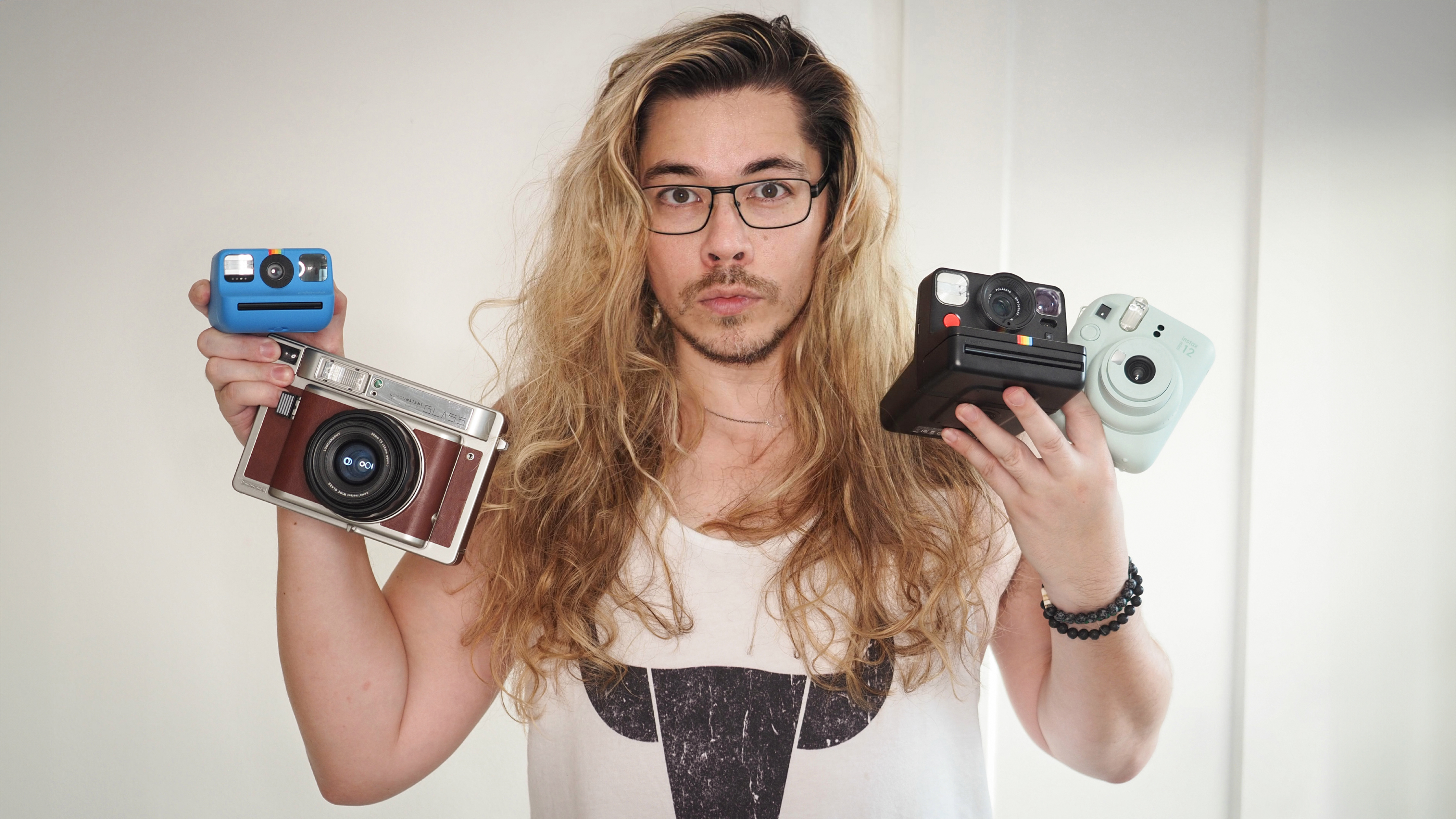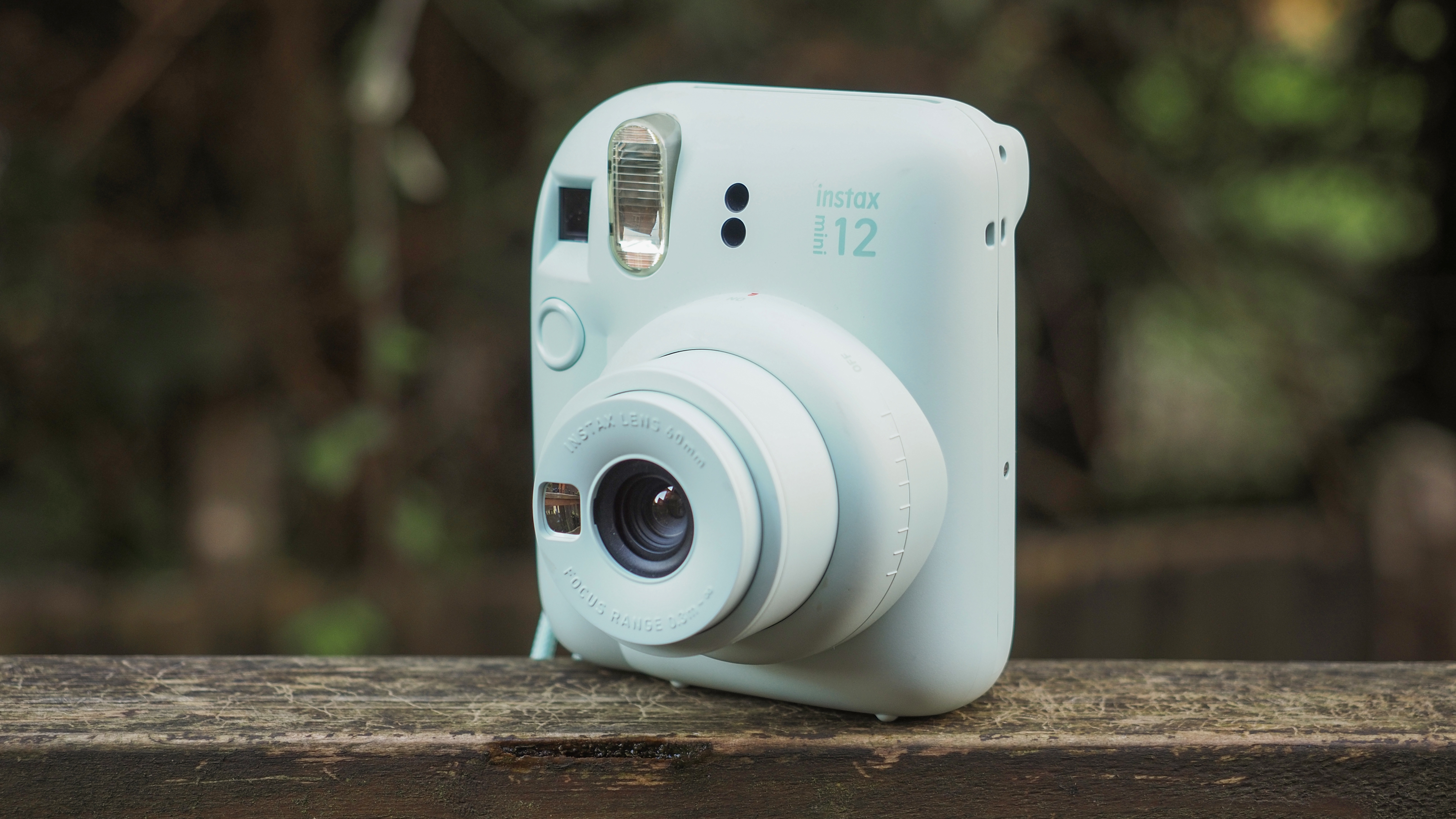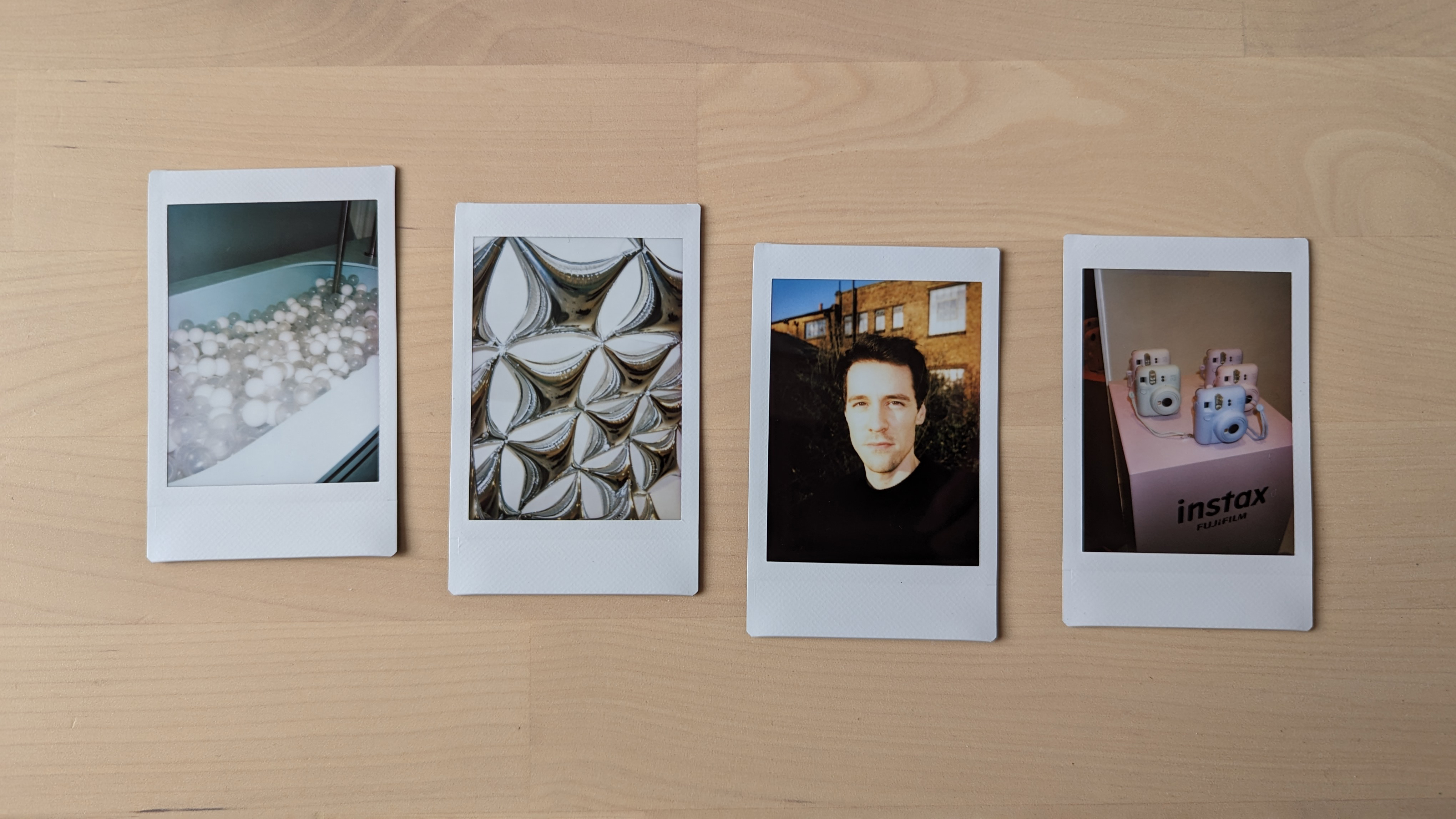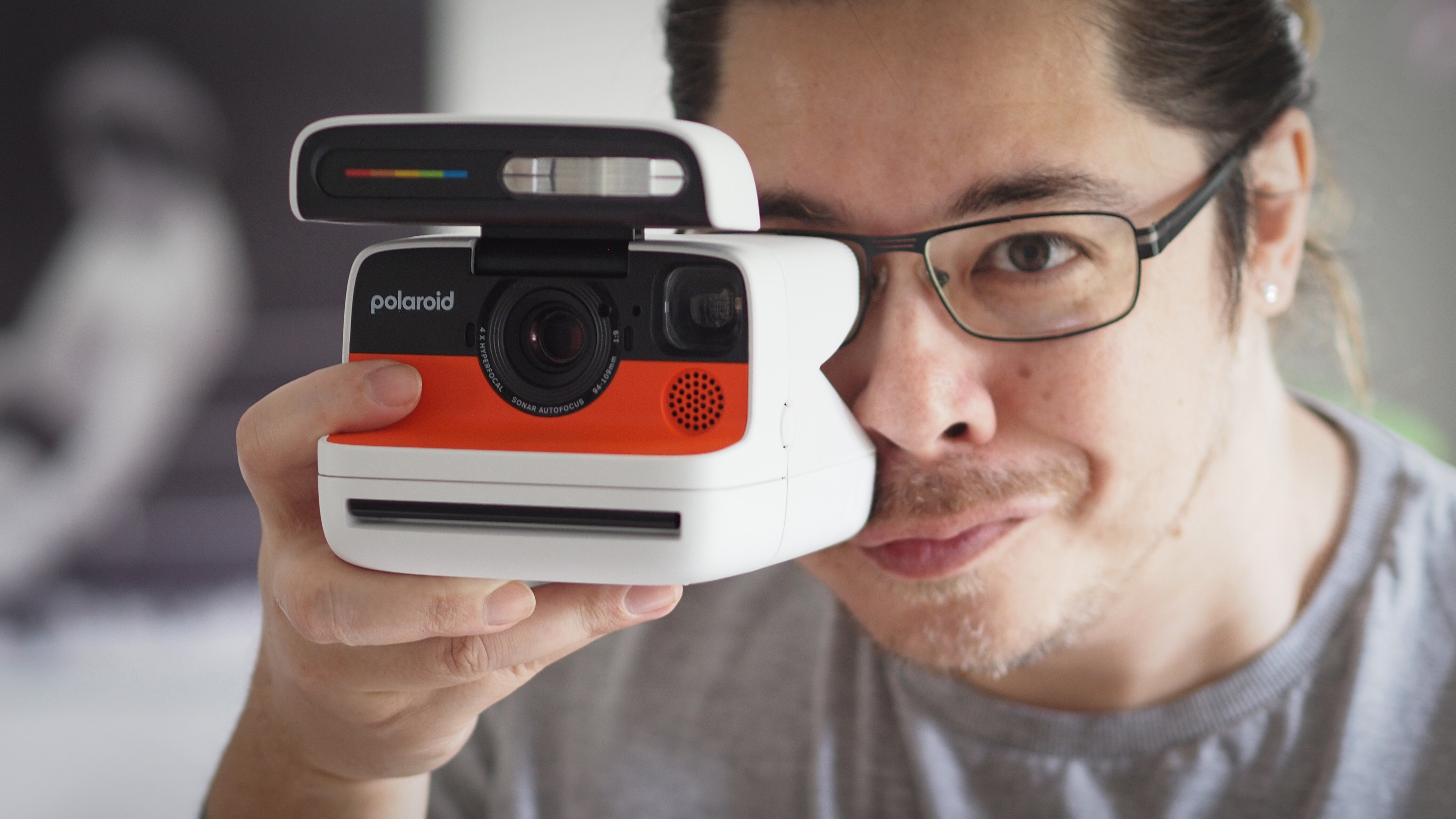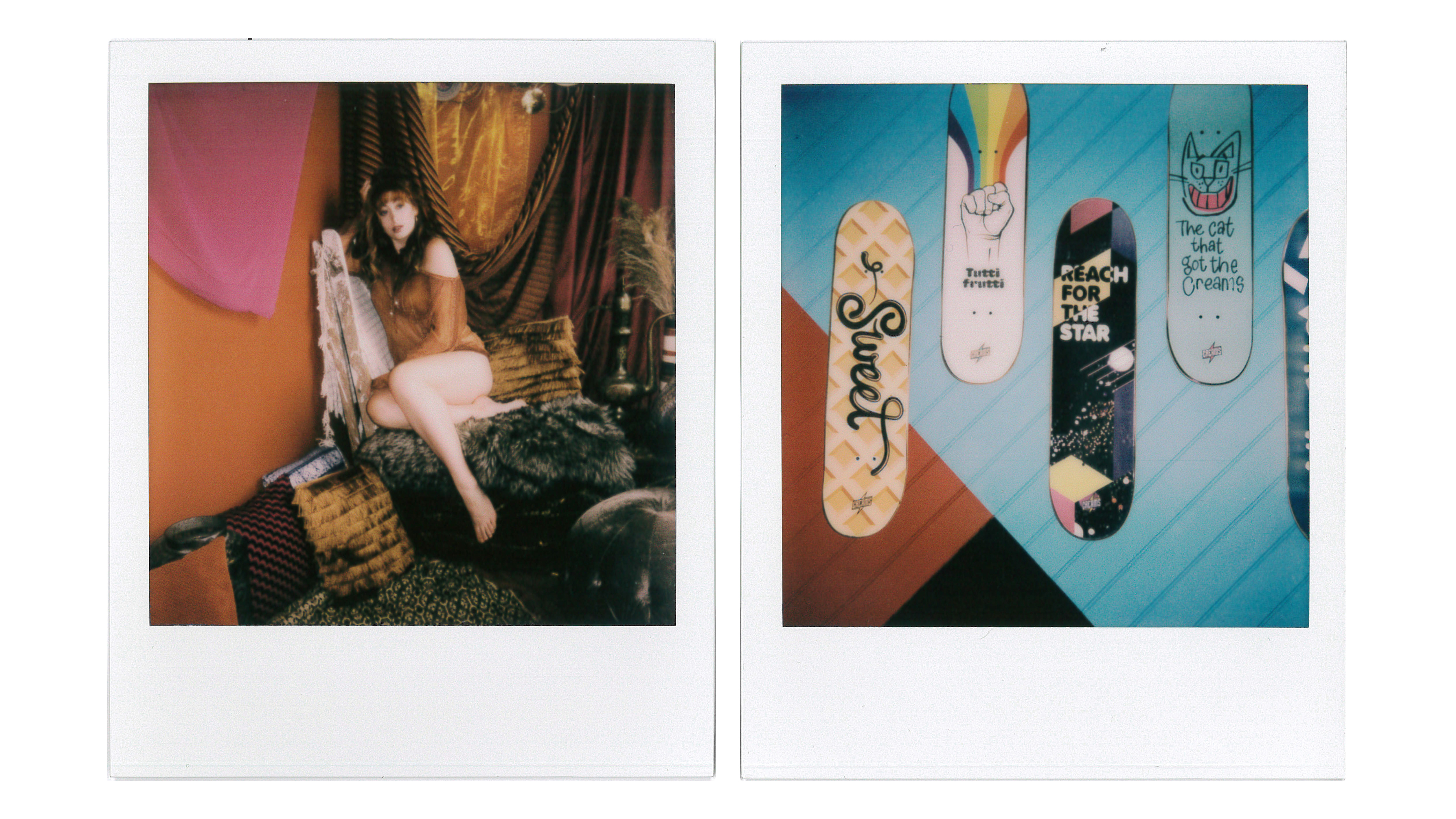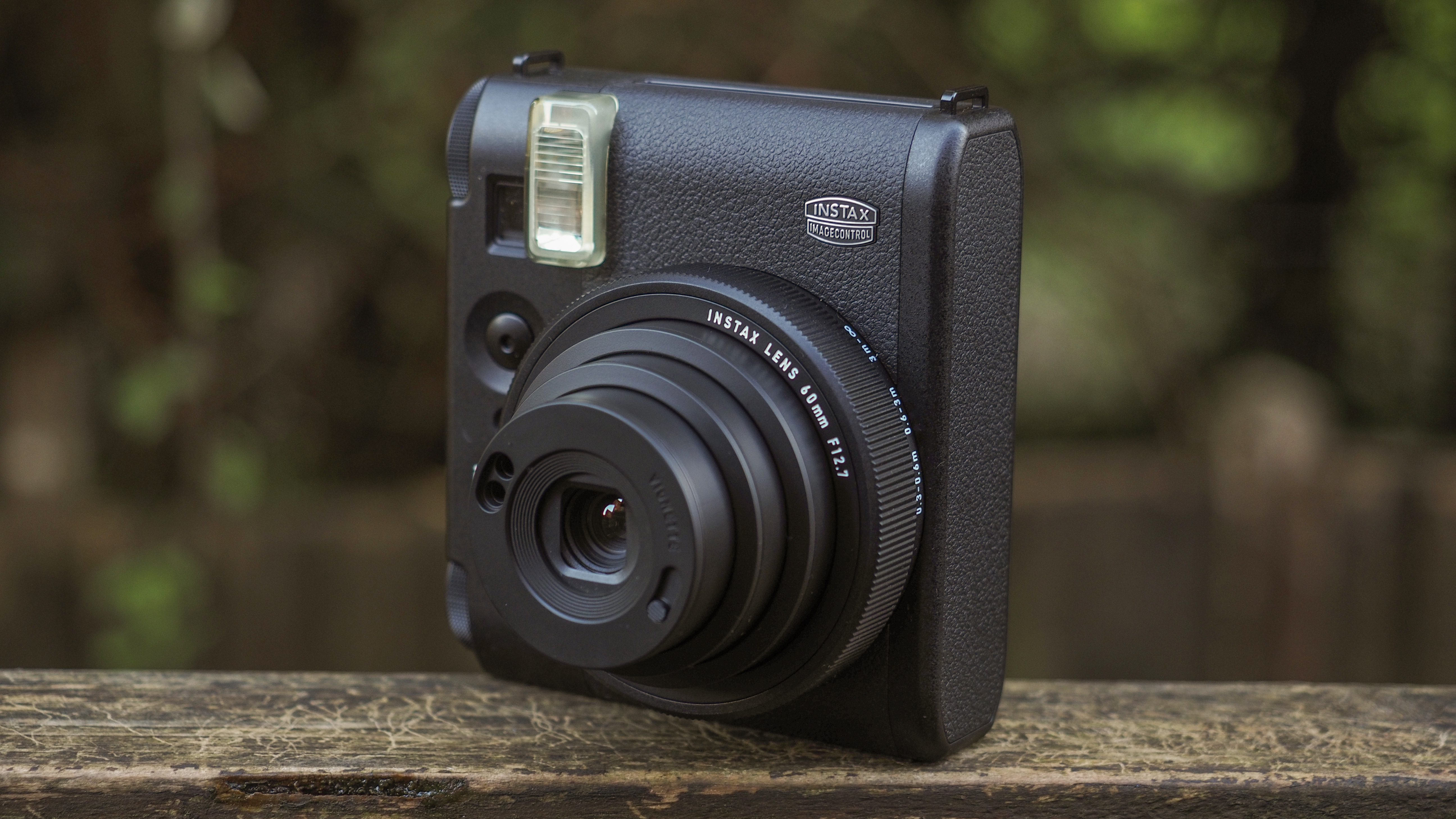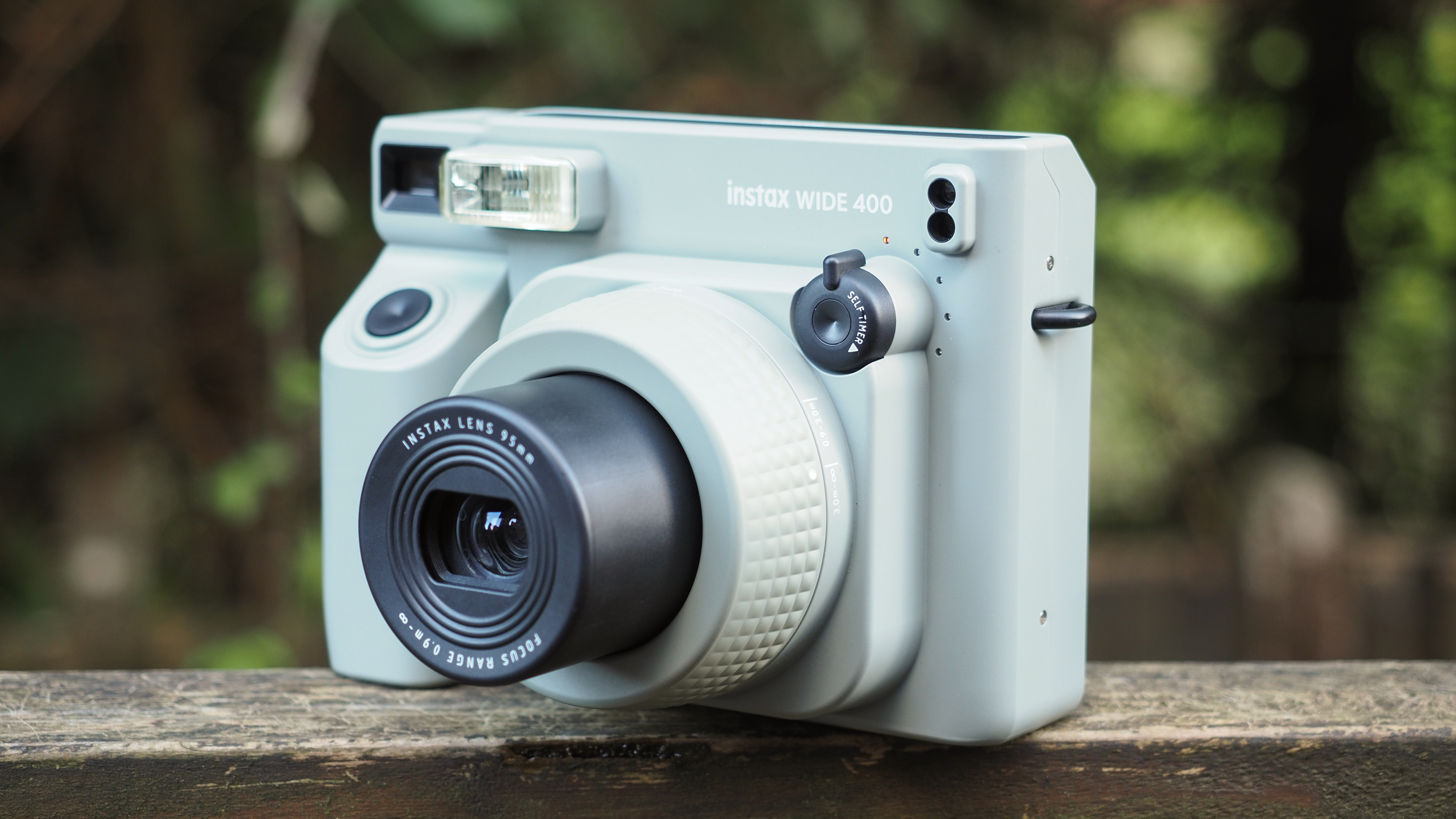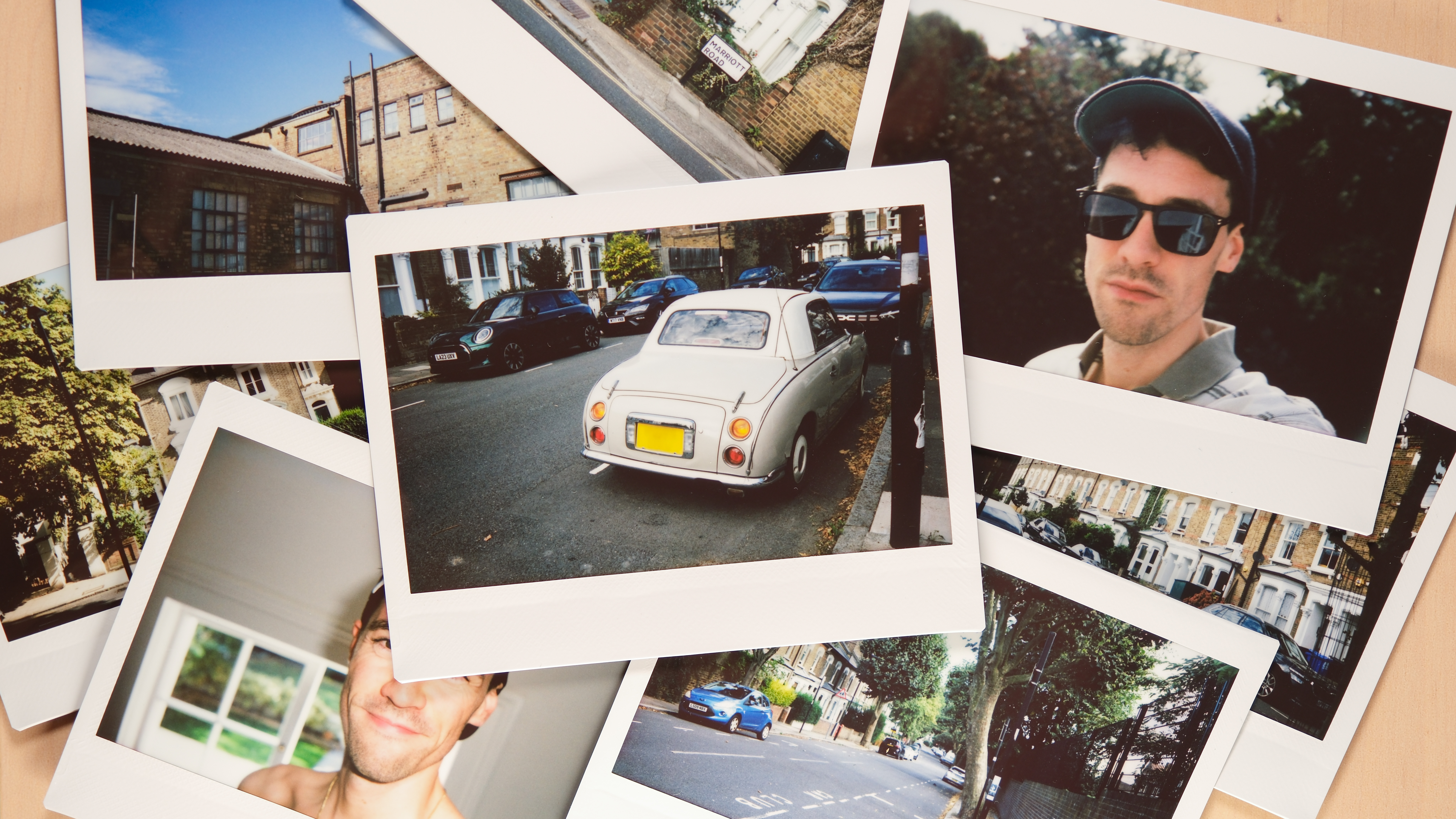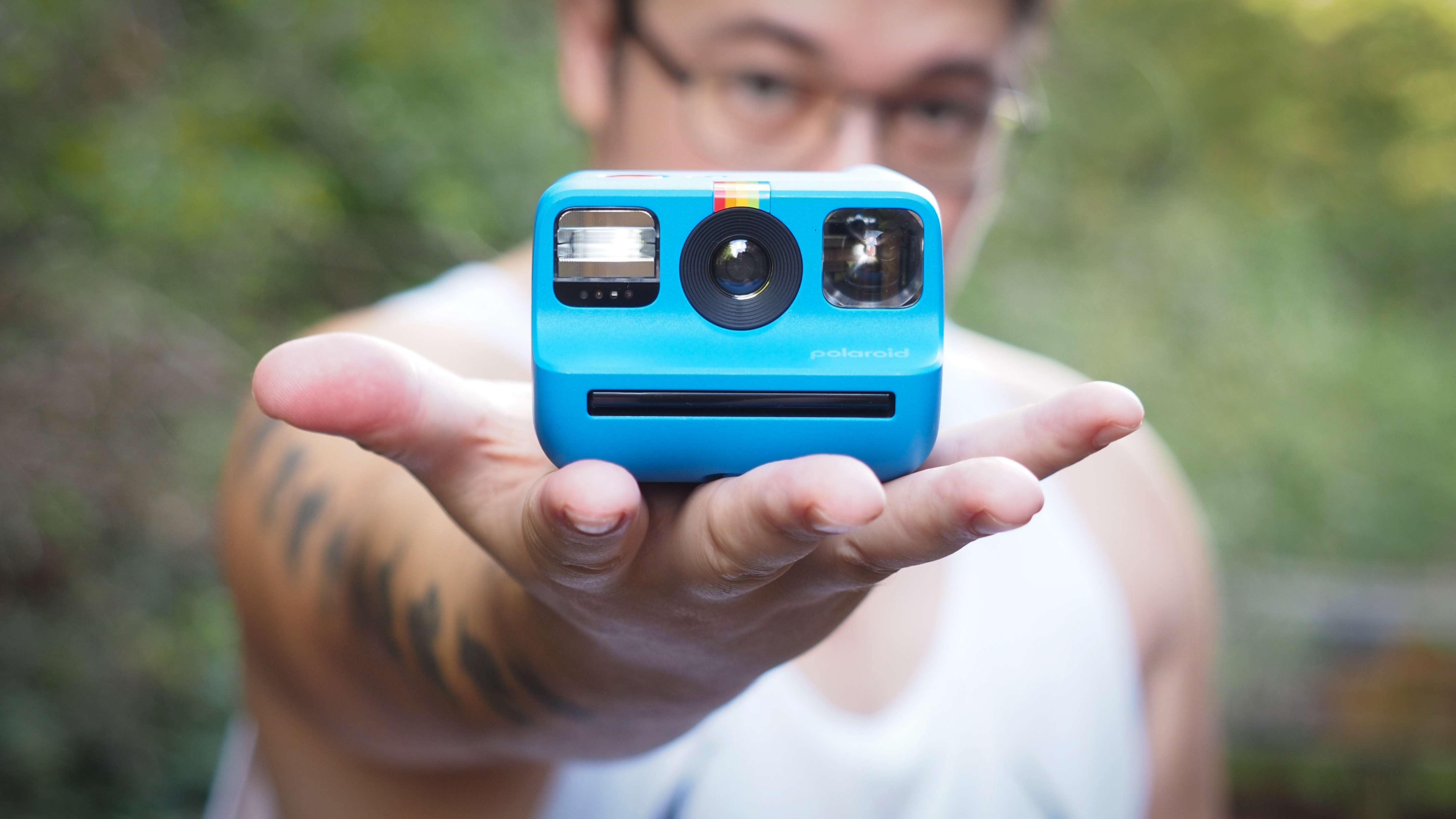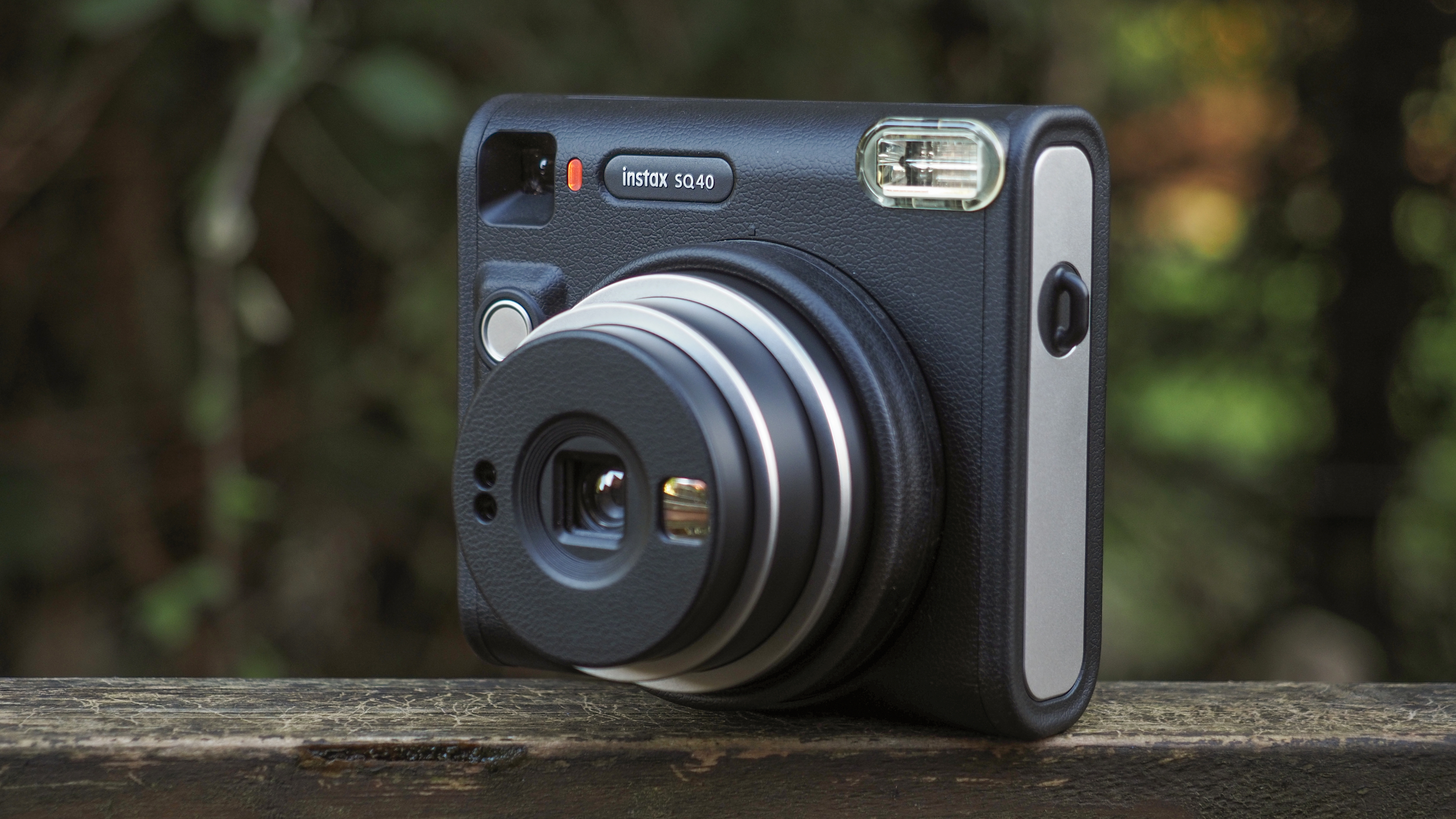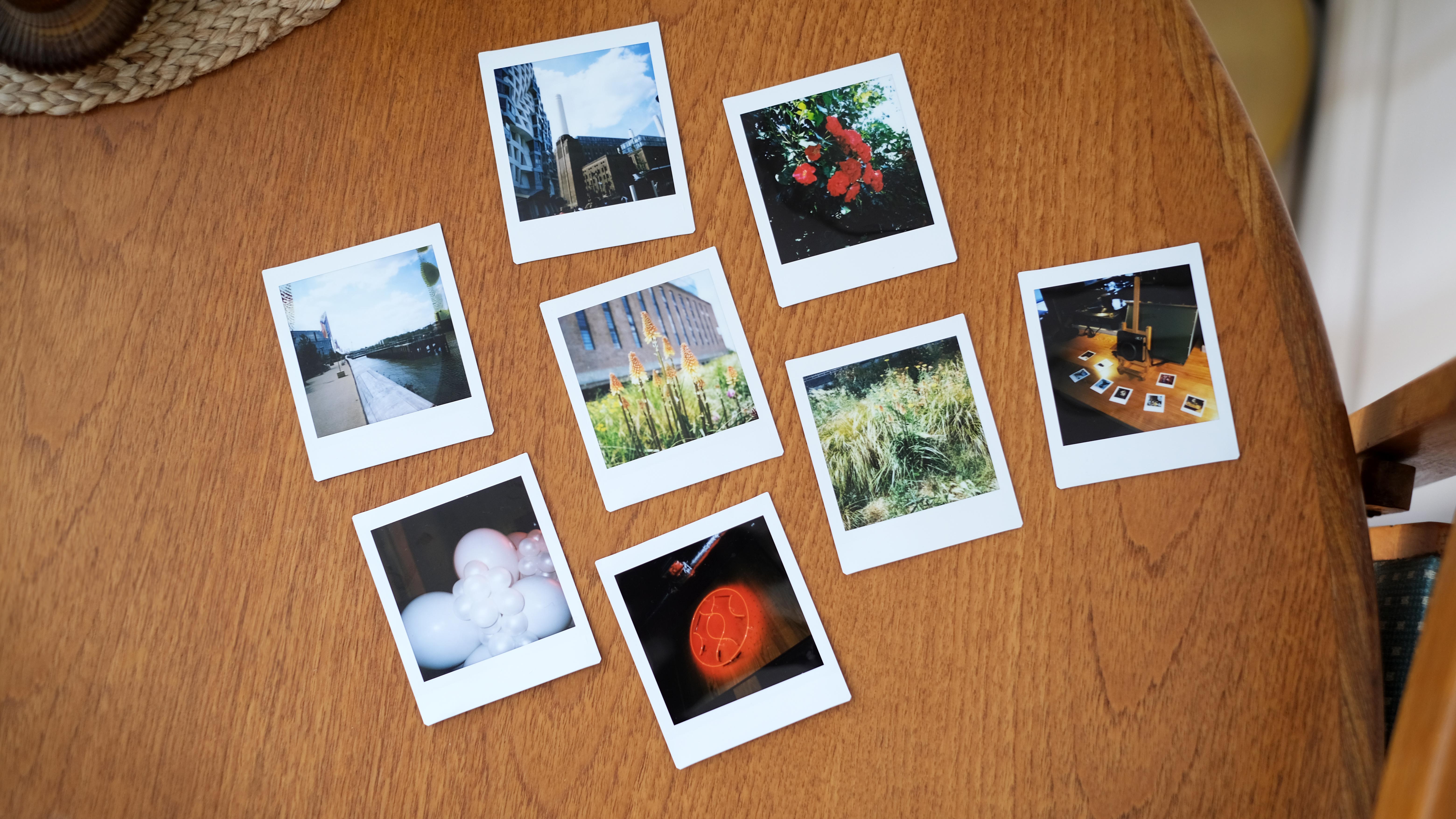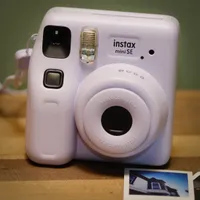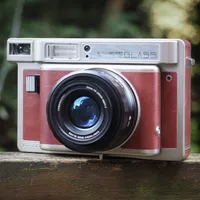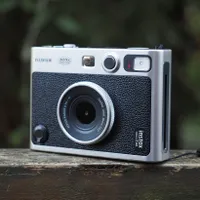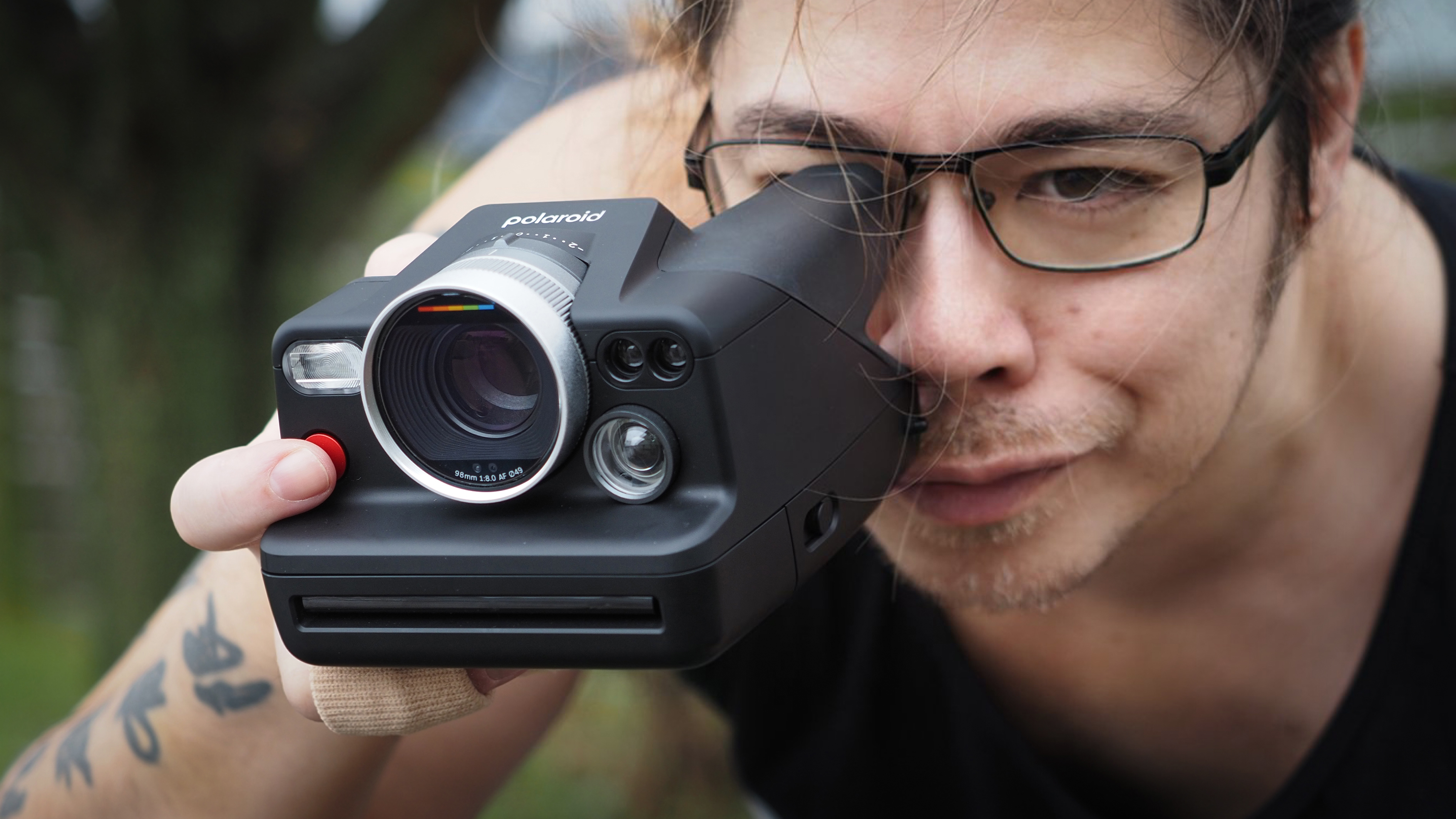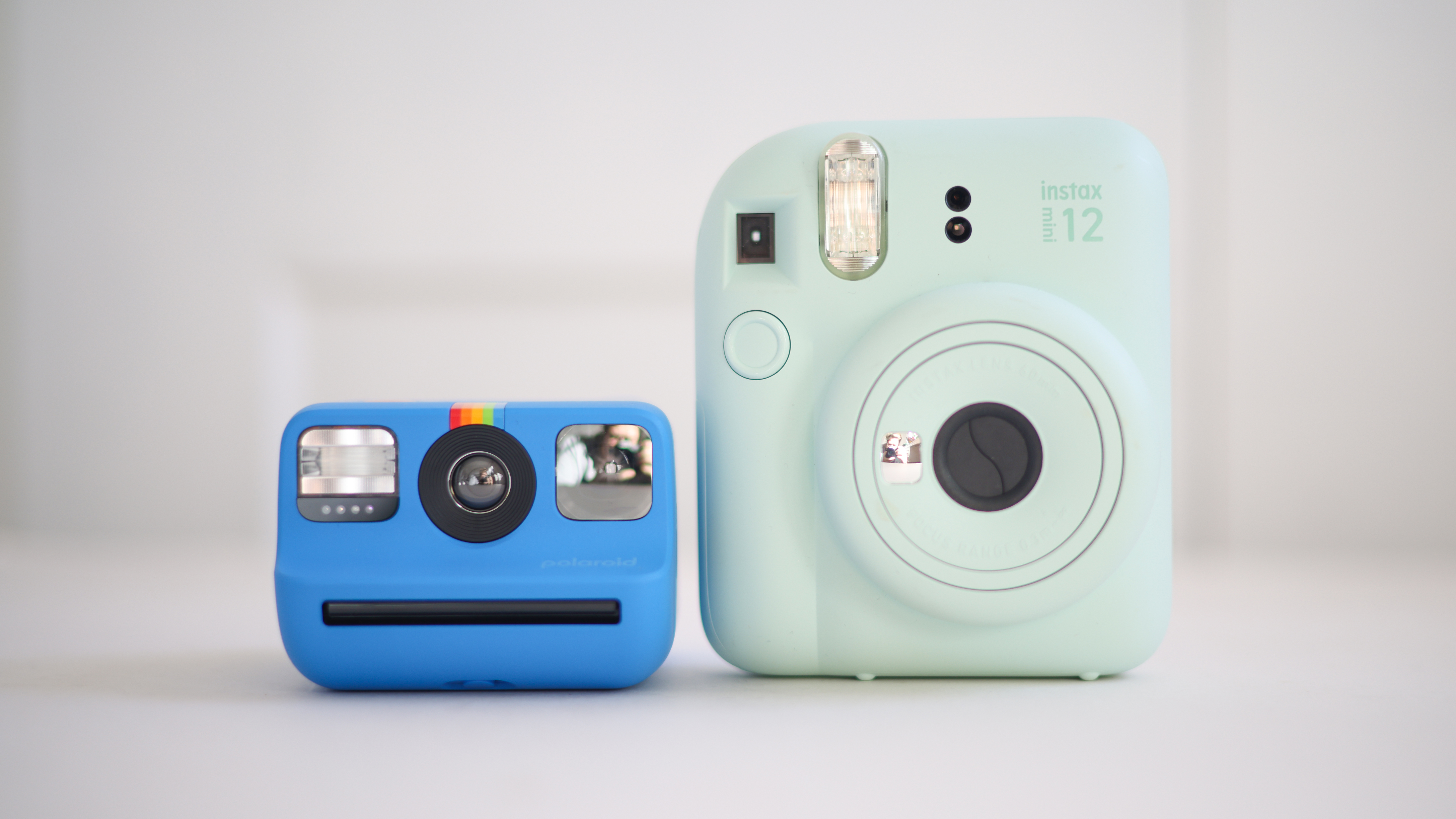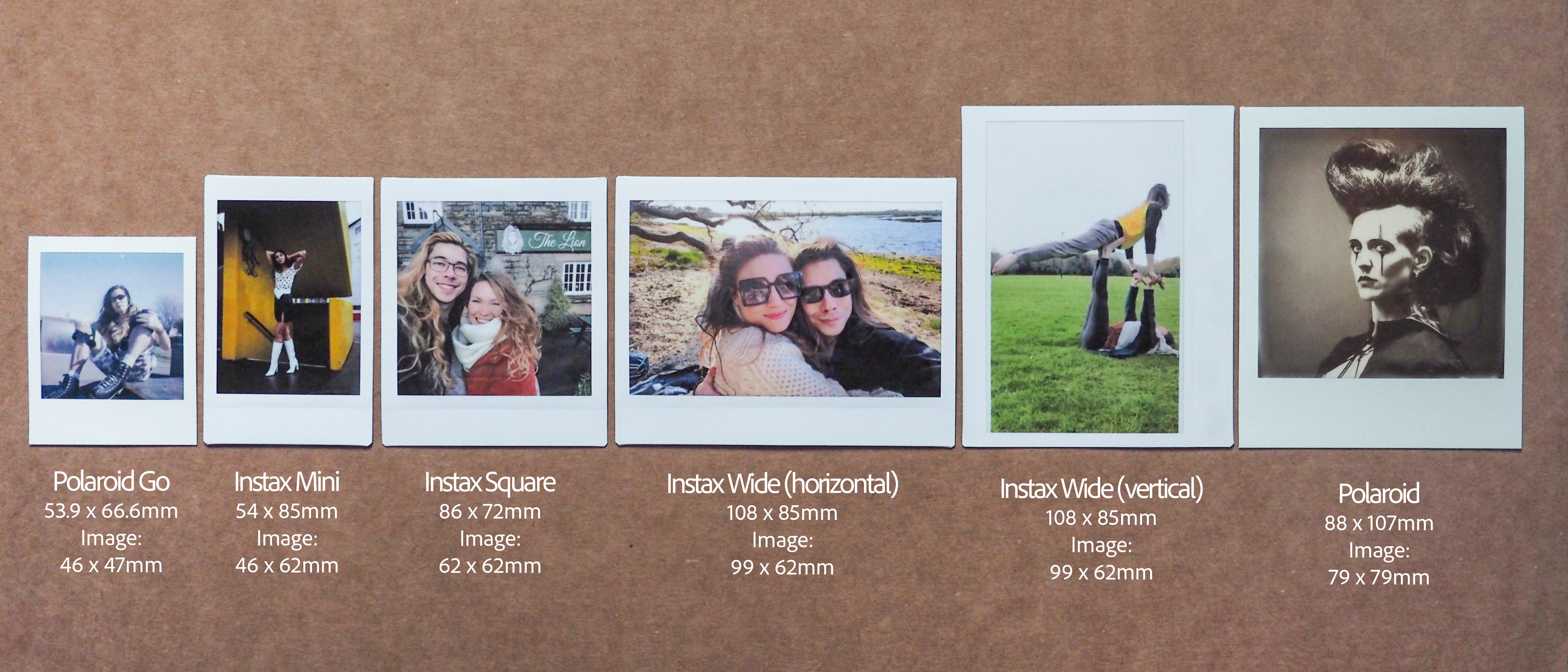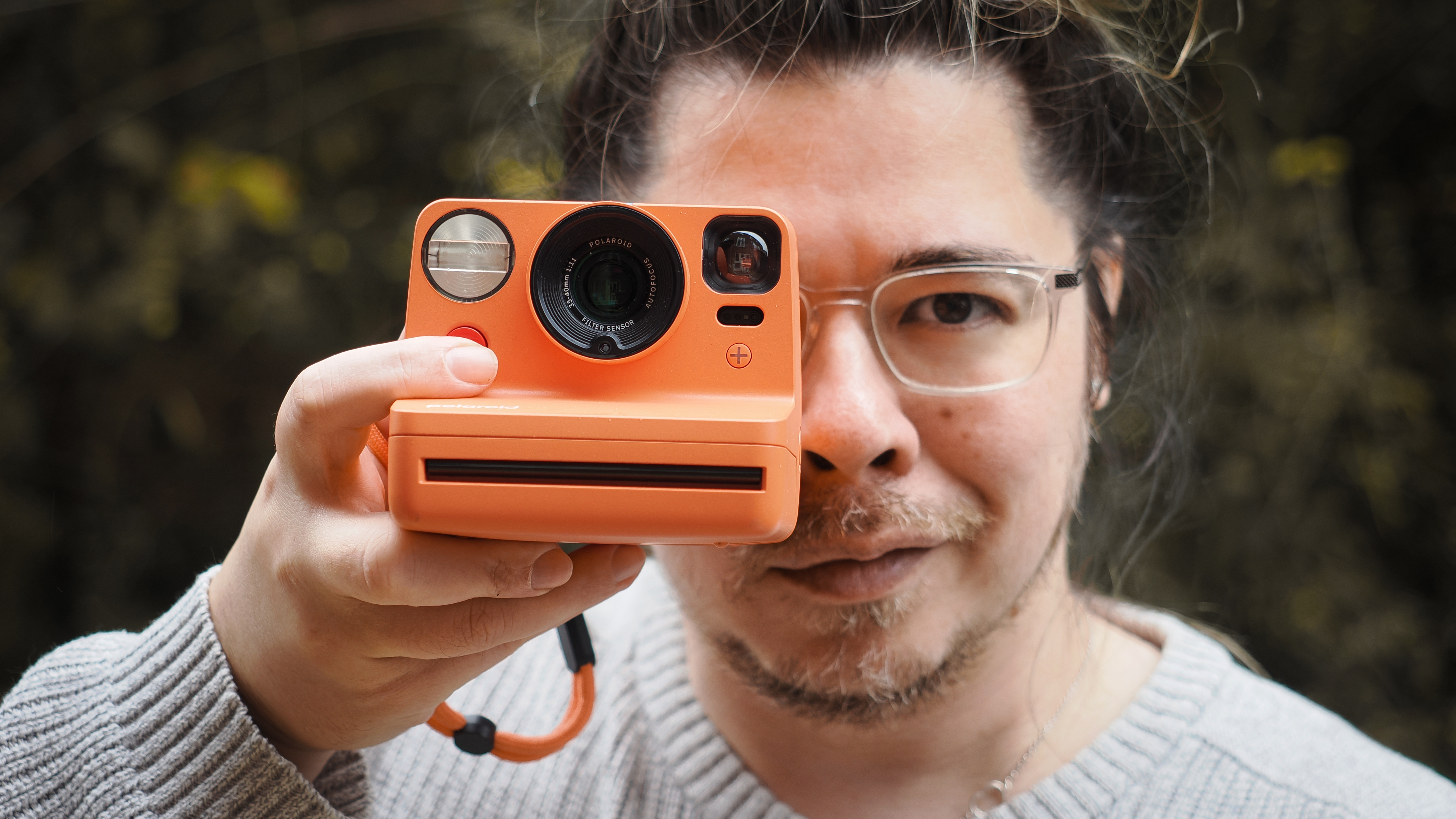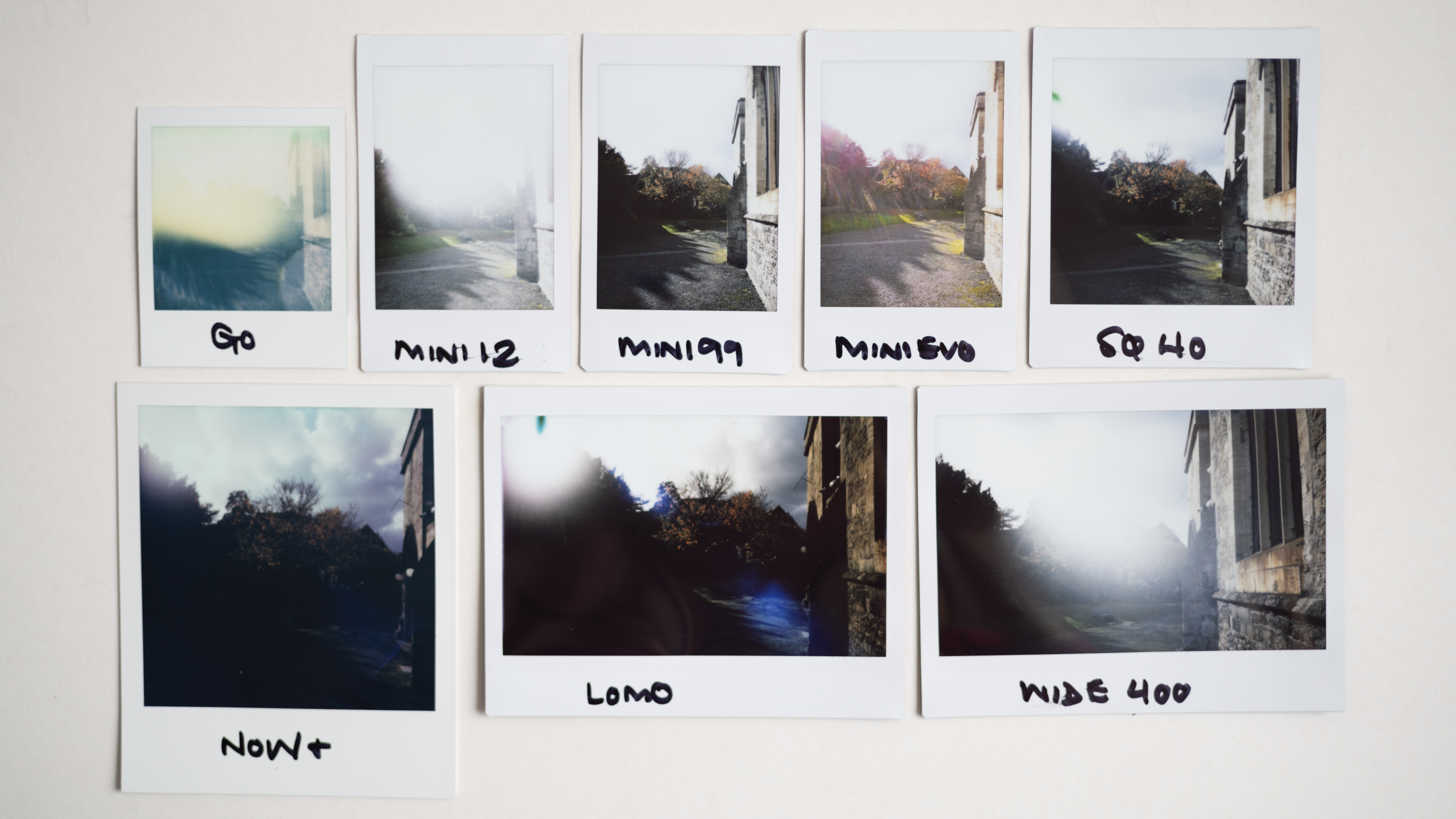The best instant cameras in 2025: Shoot stunning retro photographs with Instax, Polaroid and more
These are the best instant cameras whether you're looking for a great gift or you want to take the ultimate analog photo!
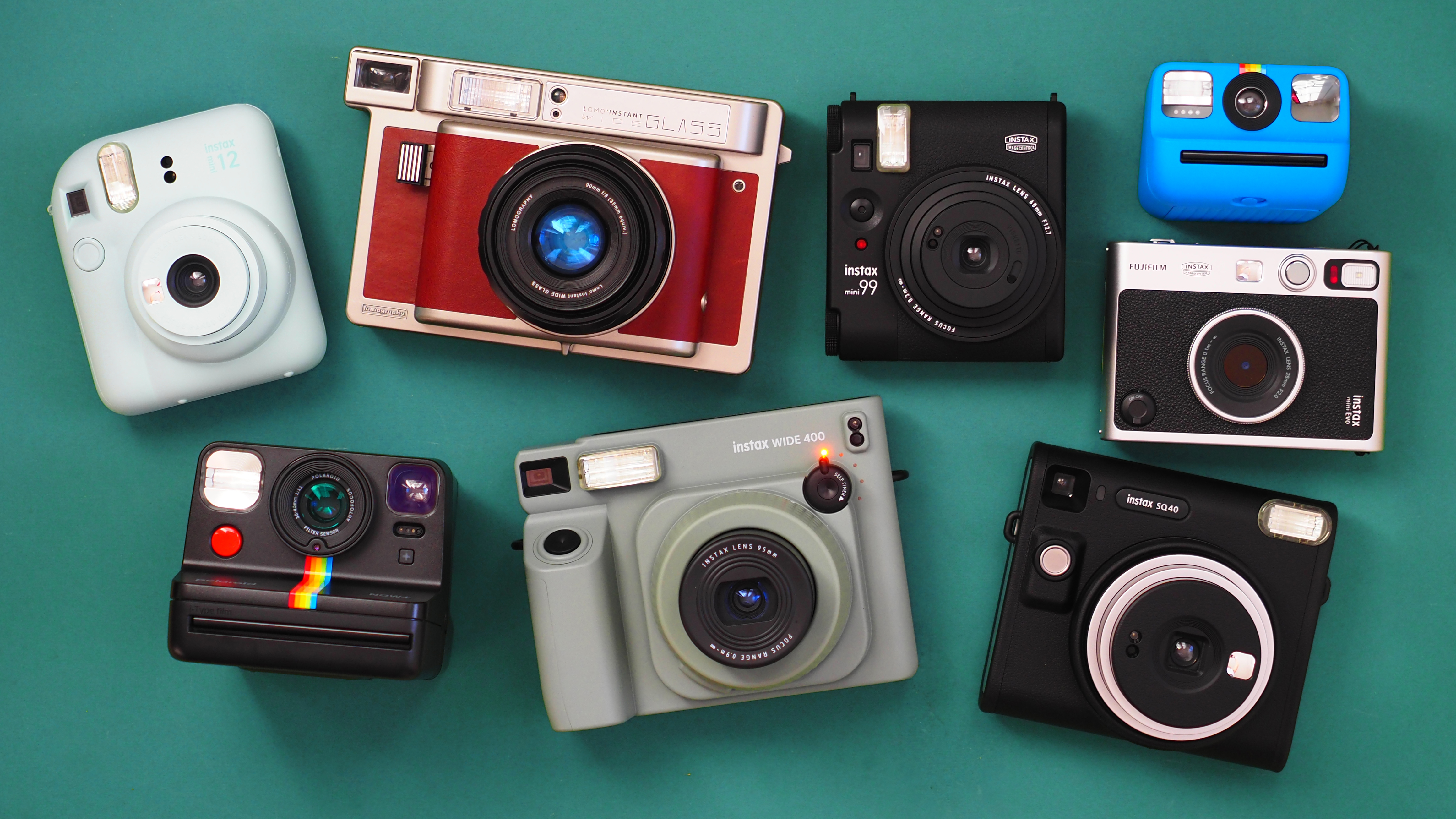
✅ 17 years reviewing cameras
✅ Over 2,200 reviews
✅ ️48,000 hours of testing
✅ 30 instant cameras tested
The best instant cameras do something that no other camera can do: give you an immediate, physical, one-of-a-kind, actual photograph!
These can be gifted, scrapbooked, slipped into greetings cards, stuck on the fridge, kept in a wallet… in short, the best instant cameras produce real photographs on the spot. I love using them at weddings, days out with family or when friends come to visit. They're also great for vacations; an instant photo is a much better memento than a mass-produced postcard.
My top pick is the Instax Mini 12, which is the perfect blend of quality, size, and price. Speaking of which, I believe that these cameras should be affordable – so I haven't included the likes of the Polaroid I-2 (with its eye-watering $600 / £600 / AU$1,000 price tag), even though it's technically the best instant camera ever made!
While the cameras on this list are all analog, popping out a photo as soon as you press the shutter, there are also digital hybrid instant cameras that combine a digital camera with a built-in printer – so you can choose which shots to print. Just bear in mind that they have an image sensor, so you get very "digital" photos that look a lot less retro than the analog cameras listed below!
What I look for
Above all, I think instant cameras are about one thing: taking photographs quickly and easily. Cameras score extra points with me for packing in more features – but if that interferes with their ease of use, then that will count against them.
Quality of photos is obviously crucial as well. This is pretty subjective, though; Instax and Polaroid use different photochemical processes that produce a very different "look". "Instant" is also a relative term, as Instax prints take about 1½ minutes to develop while Polaroids take up to 15 minutes (see the Instax vs Polaroid section for more on both points).
Battery life is the other biggie. Instant cameras have built-in flash units and mechanical parts to process photos, so they burn through energy pretty quickly. And a camera with no juice isn't much use!

I took my first Polaroid in 1984, and I've been addicted to instant cameras ever since! I've still got a Polaroid 600 from the 1980s, and I bought the very first Instax camera ever made (the Mini 10) which is now 25 years old. I currently own 19 instant cameras, and my collection keeps growing!
The Quick List
This is the quickest way to navigate the best instant cameras. Check out my quick thoughts below, and you can jump to my in-depth verdict of each pick along with specs and a link to my full review.

If you're looking for your first instant camera, this is the one to get! It's affordable enough to be a spontaneous purchase, but I think the quality is up there with much more expensive models. It's also super compact and uber-cute – and the film is very affordable, too.
Read more below
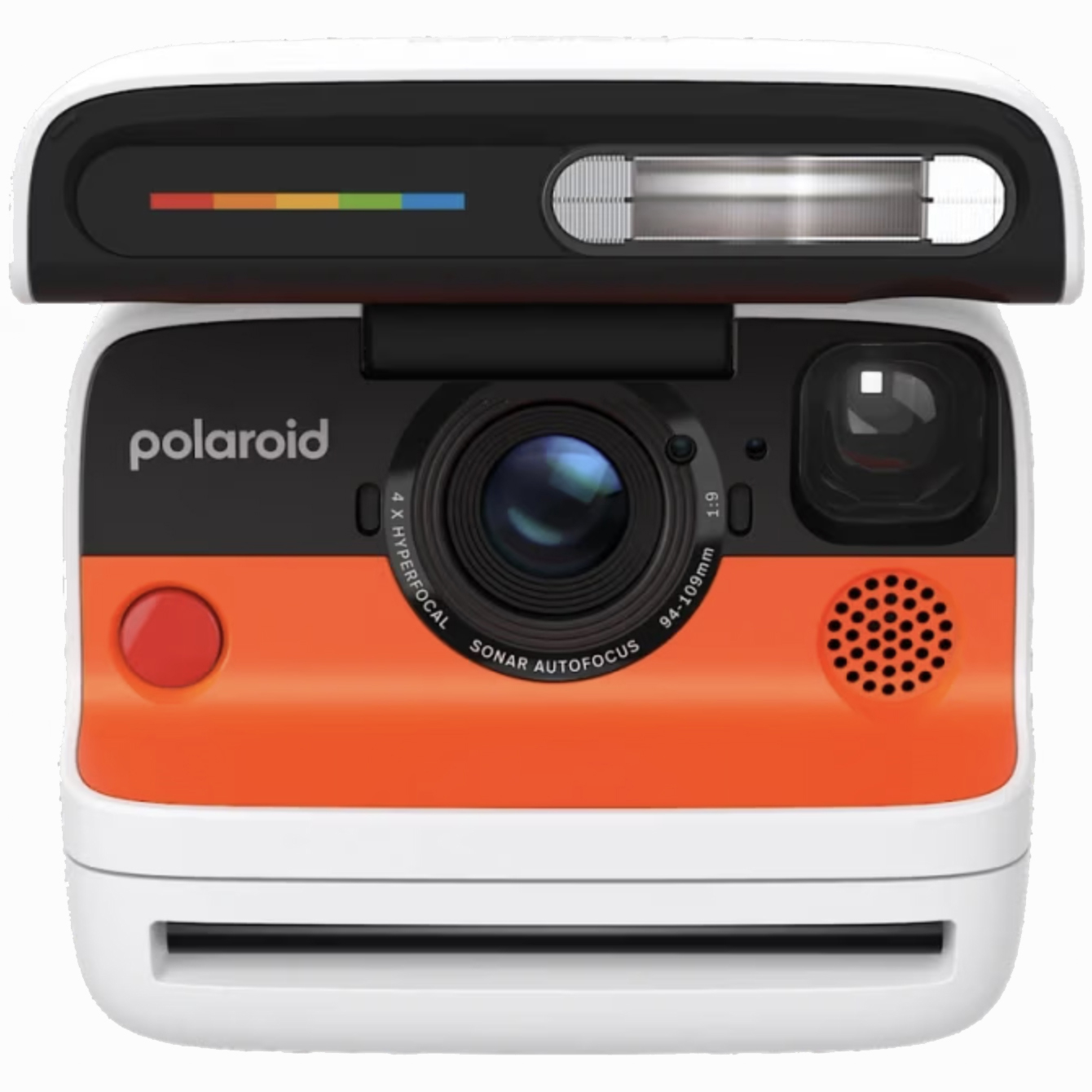
Polaroid is the originator of instant cameras, and the Flip is a throwback to the classic models with clamshell designs, sonar autofocus and a nice meaty flash! It's not just a throwback, though – I love that it pairs with the Polaroid app for full features and manual control.
Read more below
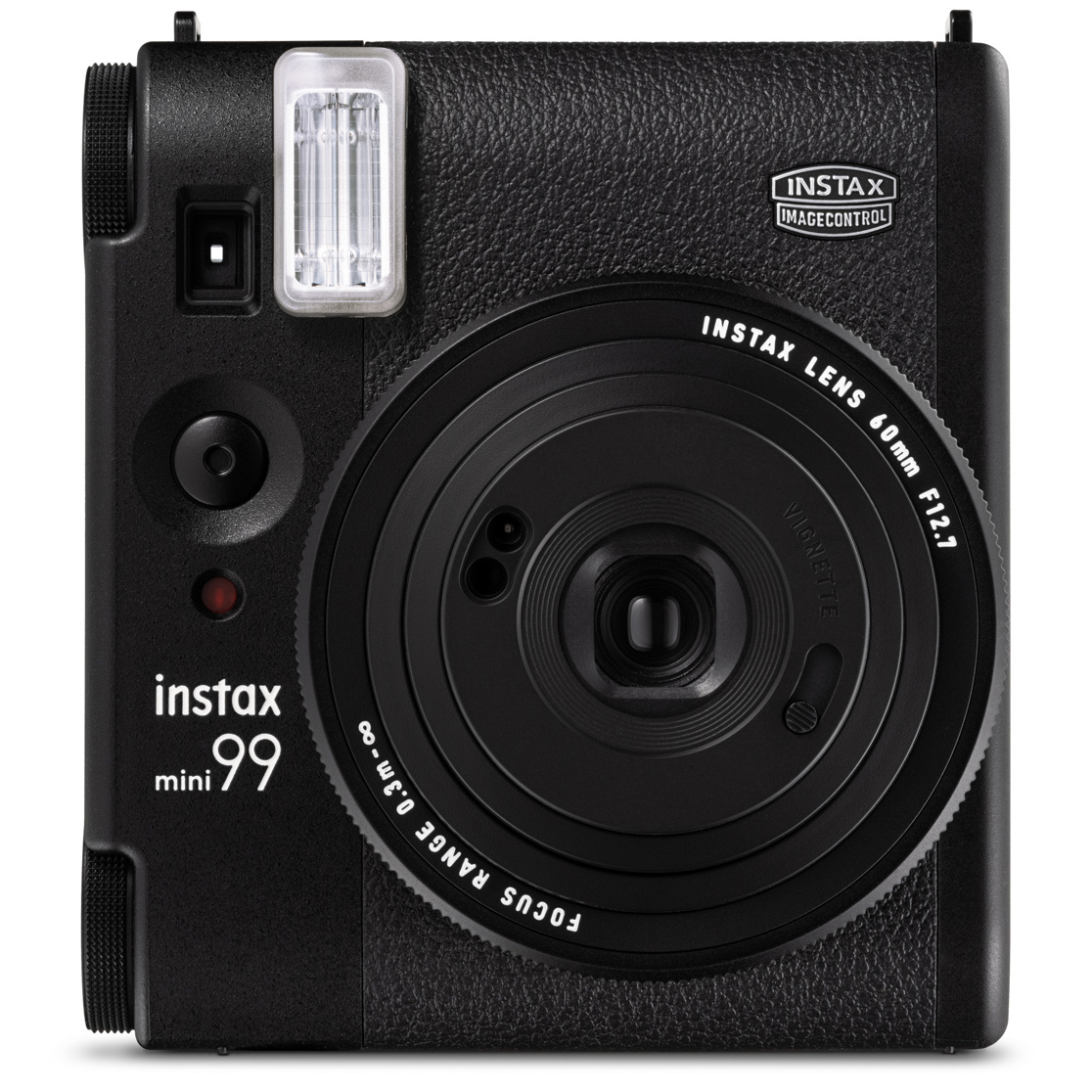
If you want the best that Instax has to offer, it's gotta be the Mini 99. While the Mini 12 boasts bubblegum colors and contours, the 99 is sleek, serious, and is far and away the most creative Instax thanks to the internal LEDs that create in-camera light and color effects.
Read more below
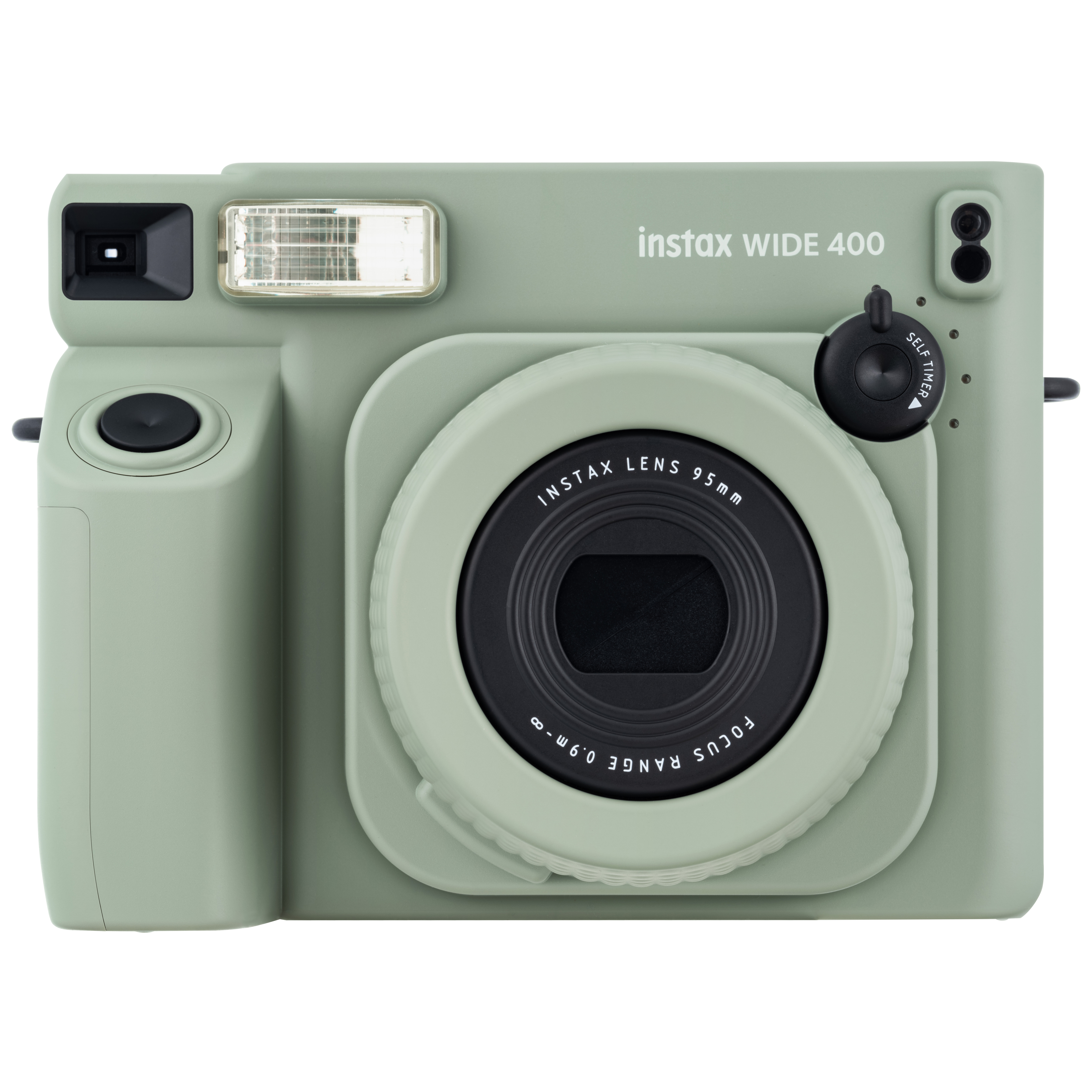
If you love to capture scope in your images, this camera produces the widest prints possible! It uses Instax Wide film with a rectangular image ratio that's perfect for group shots, landscapes and photos to put on the fridge. It's a big huge tank that takes big huge shots!
Read more below
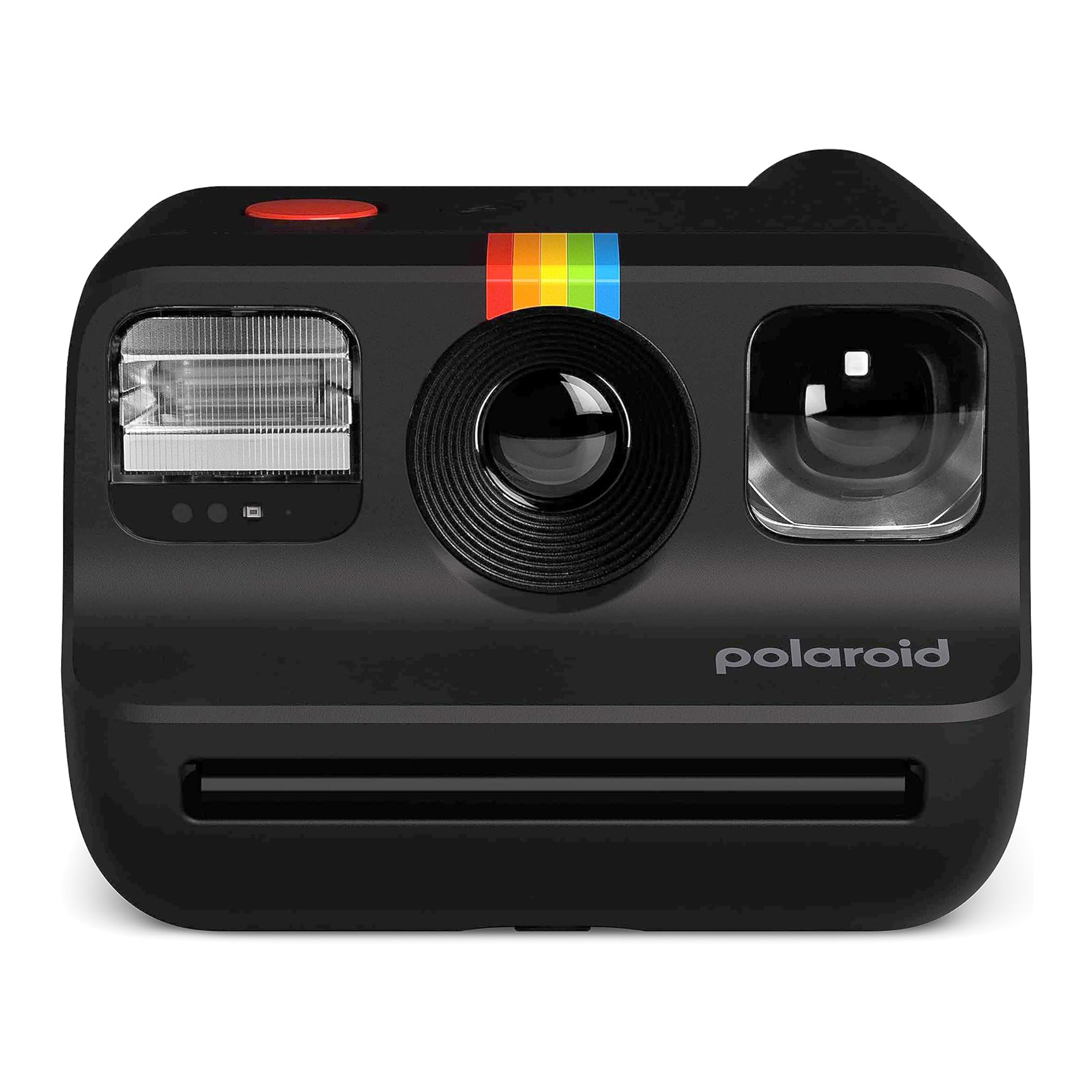
The Go is truly picket-size, coming in even smaller than the Instax Mini 12. I think it's the cutest camera ever made, and it's perfect for passing around at parties and getting people talking. It's also the ideal size for kids' hands, if they catch the photo bug.
Read more below
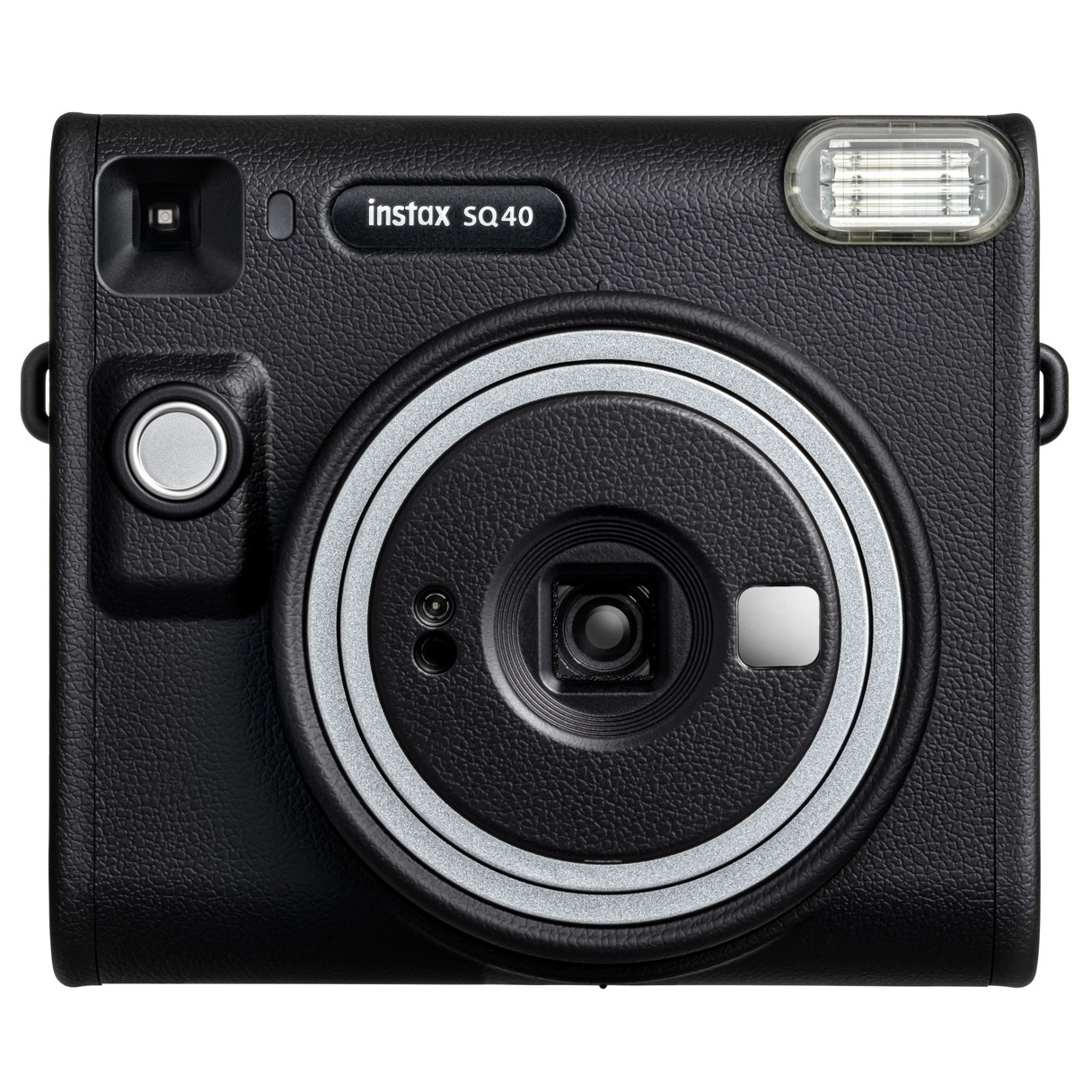
If you want square photos with the best conventional image quality, I suggest going for the SQ40 – its photos are smaller than Polaroids, but they're much punchier (not to mention cheaper). Like the Mini 99, it also looks a bit more grown-up than the other Instaxes.
Read more below
The best instant cameras I recommend
Why you can trust Digital Camera World
Here are my detailed thoughts on each of the best instant cameras that have made the cut for this guide. I've tested them all out, and I also personally own quite a few of these – I put my money where my mouth is, so you can trust my recommendations!
Best budget
Specifications
Reasons to buy
Reasons to avoid
✅ You want great photos and great value: All Instax cameras boast (broadly) the same image quality, but the smaller size of Mini prints makes them the most affordable.
✅ You love color choices: Instax Minis come in five bright colors, so they're brilliant for expressing yourself – and perfect for gifting, if you know someone's favorite color!
❌ You already own a Mini 11: Not a huge amount has been changed since the previous model, so it's not worth the upgrade if you've already got an 11.
❌ You want a serious-looking camera: The candy colors and cutesy design aren't for everyone. For something a bit more grown-up, look to the Mini 99.
The Mini 12 is my top pick for a whole bunch of reasons, but above all is the price: if you've never owned one before, or you don't want to spend a lot of cash, this is the best bang-for-buck option. (Though if you're in the US, the Walmart-exclusive Instax Mini SE is even cheaper.)
Not only that, I love that the Mini 12 is super simple to use; just turn the lens to "On" to take regular pictures or "Close-up" to take selfies or close-up shots. No hassle, no complications.
It's also easy to compose your shots even when you're taking close-ups, thanks to "parallax correction", which means what you see in the viewfinder is very close to what you get. No more wasted frames!
The camera comes in five different colors, though I'll be honest – the subdued hues aren't particularly to my taste, and I do miss the more fun and vibrant colors of previous generations. Still, it's nice to have choices – especially if you're giving one as a gift.
Crucially, the image quality is great too – it's actually on par with the Instax Mini 99, which is the most advanced model available. I just wish you could disable the flash (though you can always cover it with a hand!).
Read our full Instax Mini 12 review
Ease of use | ★★★★★ | Row 0 - Cell 2 |
Features | ★★ | Row 1 - Cell 2 |
Photo quality | ★★★★★ | Row 2 - Cell 2 |
Battery life | ★★★ | Row 3 - Cell 2 |
Value | ★★★★★ | Row 4 - Cell 2 |
Best Polaroid
Specifications
Reasons to buy
Reasons to avoid
✅ You want truly vintage-looking photos: Instax prints are cleaner and crisper, but Polaroid photos have that dreamy retro quality that's straight out of an old family photo album. This is the real "vintage look"!
✅ You want a non-boxy camera: Instant cameras, especially Polaroids, can be a bit chunky and sharp – but the clamshell design is convenient and compact
❌ You're worried about price: Polaroid film is more expensive than Instax, and you get less of it per pack – so this will cost you more per shot you take.
❌ You want full creativity: If you want things like Light Painting mode and physical lens filters, go for the Polaroid Now+ Gen 2.
While I still think the Polaroid Now+ Gen 2 is "the photographer's instant camera", with features like light painting and physical lens filters for creative in-camera effects, the Flip has become my new favorite Polaroid – and my fave instant camera, period!
Unlike other instant cameras where the buttons and lenses are all exposed, and prone to pressed and bashed around in your bag, the Flip is a throwback in many ways to classic clamshell cameras like the Polaroid Sun.
The camera deploys by flipping up the flash module, revealing the shutter button, lens and sonar autofocus unit – and the camera only turns on when it's been flipped open. I've lost track of the number of times my Polaroids have taken accidental photos in my bag, but no more!
The other benefit of the clamshell design is that the flash unit is huge and powerful, almost doubling the output of the flagship Polaroid I-2. Combined with the sonar AF and four-lens hyperfocal system, you get lovely bright photos, great image quality and fantastic focus.
It even has a tripod mount, which again isn't present on many other instant cameras, so you can take proper selfies and group shots using the self-timer. Again, it's missing all the physical and app-based creative features of the Now+, but you can still take manual control over the aperture and shutter by connecting to your phone.
Polaroid film is the same size as (just a different shape to) Instax Wide film, but bear in mind that it's also pricier – so will cost you more in the long run. But I think the unique Polaroid aesthetic is totally worth it.
Read my full Polaroid Flip review
Ease of use | ★★★★ | Row 0 - Cell 2 |
Features | ★★★★ | Row 1 - Cell 2 |
Photo quality | ★★★★★ | Row 2 - Cell 2 |
Battery life | ★★★★ | Row 3 - Cell 2 |
Value | ★★★★ | Row 4 - Cell 2 |
Best Instax
Specifications
Reasons to buy
Reasons to avoid
✅ You want to get creative: The Mini 99 features colored LEDs inside to simulate light leaks and other creative effects. It sounds cheesy, but it works brilliantly!
✅ You hate replacing batteries: This is the only analog Instax camera that comes with a rechargeable battery – so no more waste or scrambling around when you run dry.
❌ You're on a budget: This is the priciest Instax analog option, coming in about $100 / £75 / AU$100 more than other Instax Mini cameras.
❌ You want to take selfies: Bafflingly, unlike the cheaper Mini 12, there is no selfie mirror on the Mini 99 – so aiming and framing selfies is trickier.
I'll admit, I was skeptical when I first heard about the Mini 99's party piece: it has four colored LEDs inside the camera, which can turn on while you take pictures to produce in-camera effects.
But as soon as I tried it out, I was hooked! By flashing colored light during the exposure process, you get genuinely worthwhile effects like Faded Green, Warm Tone and (my personal favorite) Light Leak. They're not the tacky effects I feared, but rival the kinds of filters you find on Instagram – or even when shooting on old film cameras.
However, as exciting as the ability to have extra lights is the ability to turn them all off. While the flash on the Mini 12 is always on, here you can disable it when you want to – ideal when there's plenty of light and you don't want your subject or scene washed out.
While the double exposure mode is always fun, and the rear LCD display is really useful for seeing your settings, I found things like sports mode a bit needless (obviously this isn't a sports camera!) and I never bother with the included grip – though it does double as a tripod mount. And, infuriatingly, there's no selfie mirror!
Worth noting is that this is the only analog Instax with a rechargeable battery (which lasts the same 100-ish shots as AA batteries in other Instax cameras). So if you're worried about waste, this is a big plus – but obviously AAs are easier to replace if the camera runs out of juice at a party, rather than waiting for this one to recharge.
Read our full Instax Mini 99 review
Ease of use | ★★★★ | Row 0 - Cell 2 |
Features | ★★★★★ | Row 1 - Cell 2 |
Photo quality | ★★★★★ | Row 2 - Cell 2 |
Battery life | ★★★ | Row 3 - Cell 2 |
Value | ★★★★ | Row 4 - Cell 2 |
Best for wide photos
Specifications
Reasons to buy
Reasons to avoid
✅ You want the widest prints: Instax Wide film produces the widest images of any instant camera system. Perfect for those "prestige pics" and group shots.
✅ Simple to use: Unlike some rival wide cameras, the WIde 400 is incredibly straightforward to use – just turn the lens to turn it on, and start shooting.
❌ Not very feature-rich: Despite being big, it doesn't pack a lot of features, though the self-timer and tripod mount are definitely very welcome.
❌ You want something small: This is a tank of a camera! Big and bulky, it's about the size of a medium format camera – you'll definitely need a big bag!
The Wide 400 is the daddy of the Instax family. It's powered by four AA batteries rather than the usual two, making this chunky camera bigger than some of my medium format cameras!
Still, it has to be this big to accommodate Instax Wide Film – which is the widest instant film you can buy (though not the biggest, as regular Polaroids actually have a slightly larger image area). I love using this for group shots, or landscapes, or anything I want to look big and impressive in a scrapbook or on the front of the fridge.
Helpfully, there's a self-timer and built-in tripod mount for these purposes. If you're somewhere with a sturdy surface, there's also a brilliantly simple height adjustment system built into the strap: essentially two small plastic "wedges" that you can put under the camera to prop up its viewing angle.
Sadly, though, there aren't any other features. I think Fujifilm made the right call by keeping things simple, so that anyone can use it, but I look at the long exposure and tripod mode on the Polaroid Now+ Gen 2 and can't help but wish that was available here as well.
The color is also pretty divisive, and it's the only option available (for now), so hopefully you don't mind it!
Read our full Instax Wide 400 review
Ease of use | ★★★★★ | Row 0 - Cell 2 |
Features | ★★ | Row 1 - Cell 2 |
Photo quality | ★★★★★ | Row 2 - Cell 2 |
Battery life | ★★★ | Row 3 - Cell 2 |
Value | ★★★★ | Row 4 - Cell 2 |
Best pocket-sized
Specifications
Reasons to buy
Reasons to avoid
✅ You want a truly pocketable camera: "Fits in your pocket" doesn't always mean that, but the Go is smaller than the Instax Minis and really is pocket-sized!
✅ You want the smallest prints: Polaroid Go film is the smallest available, so it's perfect for wallet windows or slipping into the back of your phone case.
❌ "Image quality" is top priority: I love the dreamy look of Polaroids, but not everyone agrees – and Polaroid Go film tends to overexpose and undersaturate.
❌ Price per print is important: Polaroid film is always pricier than Instax, and that's the case here – your pennies go further with packs of Instax Mini film.
The Polaroid Go is officially the smallest analog instant camera you can buy – and I fell in love with it the moment I saw it. In fact, so does everyone who sees this camera! Trust me, if you want to make friends, just whip this out at a party – it's an instant conversation starter.
Not only is it the tiniest camera, it takes the tiniest pictures as well. It uses Polaroid Go film, which just like the camera itself is even smaller than its Instax Mini rival. And it's one of the most all-out fun cameras – instant or otherwise – that I've ever used.
Initially I thought that its tiny size – bearing in mind you can literally hold this camera between your thumb and forefinger – would make the Go difficult to hold and use. In fact, it's probably the easiest instant camera to handle! And because it's so teeny, it's the perfect size for small hands – and kids love taking pics with this camera.
Despite being even smaller than the Instax Mini 12, it boasts more features – such as double exposures, and a rechargeable battery with USB-C port – and even packs in a selfie mirror.
So what's the catch? Well, it's the image quality – there's no arguing that Instax Mini cameras take "better" photos, with crunchier contrast and more consistent colors.
Some people love the dreamy and imperfect quality of Polaroid film – but for some reason, Polaroid Go film is very prone to overexposure. On the one hand this gives them a washed-out nostalgic quality (which I personally enjoy), but they're definitely more "fun" than "forever" if you're thinking about keepers for a photo album.
Read my full Polaroid Go Generation 2 review
Ease of use | ★★★★★ | Row 0 - Cell 2 |
Features | ★★★ | Row 1 - Cell 2 |
Photo quality | ★★★ | Row 2 - Cell 2 |
Battery life | ★★★★ | Row 3 - Cell 2 |
Value | ★★★★ | Row 4 - Cell 2 |
Best for square photos
Specifications
Reasons to buy
Reasons to avoid
✅ Fantastic battery life: The Square SQ40 gives you brilliant performance out of its batteries, lasting you around 30 packs of film; that's 300 shots!
✅ Great image quality: Photographs taken on Instax film are consistent, contrasty, crisp, and just plain great.
❌ You want easy-to-find batteries: While battery life is great, the SQ40 takes CR2 cells – which can be tricky to find, especially when on vacation.
❌ You want advanced features: If you want to get creative with things like double exposures, look to the Polaroid Now+ or the (smaller) Mini 99.
For me, Instax Square is the sweet spot of all the Instax formats. It's the Goldilocks "not too big, not too small" of the family, but I think it's also down to the square shape of the images: it just works better for instant photography.
Of course, that puts it toe-to-toe with Polaroid cameras, like the Now+ Gen 2 above. So why would you go for one over the other?
Well, while I'm sad that Instax removed so many features from the Square lineup (such as a self-timer, tripod mount, and double exposures, which were all in the discontinued SQ6), I appreciate that this camera is so straightforward to use. You can give this to anyone in your family, from kids to grandparents, and they can take a picture without having to read a manual to figure it out.
So basically, if you want a square camera with loads of shooting modes and special features, that's where the Polaroid Now+ comes in. If you just want a simple-to-use camera that takes great-quality photographs (and has a selfie mirror), the SQ40 is for you.
The best thing that this camera has going for it is the amazing battery life, which is good for around 300 shots – triple that of any other Instax! However, it achieves this by using extremely tricky-to-find CR2 batteries – which, wastefulness aside, can be a real pain to replace, as many stores don't carry them.
Read our full Fujifilm Instax Square SQ40 review
Ease of use | ★★★★★ | Row 0 - Cell 2 |
Features | ★★ | Row 1 - Cell 2 |
Photo quality | ★★★★★ | Row 2 - Cell 2 |
Battery life | ★★★★★ | Row 3 - Cell 2 |
Value | ★★★★ | Row 4 - Cell 2 |
Honorable mentions
There are so many instant cameras available (there are ten different kinds of Instax, for starters!) that it's really brutal having to come up with a short list. However, the cameras mentioned above are definitely my top recommendations.
Still, if you haven't found something that you feel is quite right for you, here are some honorable mentions that are also great cameras worth considering:
Instax Mini SE
A US-only product (and a Walmart exclusive at that), the SE is the cheapest instant film camera you can buy. Priced just $67 (including a pack of film!) it offers more control than the Mini 12, but isn't fully automatic (you set the exposure manually) and requires more batteries.
Lomo'Instant Wide Glass
Made by Lomography, this camera takes Instax Wide film. Like the Polaroid I-2 it features a glass lens – and thus offers the better image quality than the Wide 400, along with a boatload more features. However, it's more complex to use – and more expensive, too.
Instax Mini Evo
This isn't an analog camera, but a digital instant camera hybrid. It takes bright, sharp images more like a phone, and only prints photos when you tell it to (instead of as soon as you take them). As a bonus, it can print any image on your phone onto Instax Mini film.
FAQs
What's the best instant camera for weddings?
The Instax Mini 12 is probably the best instant camera for wedding guests, thanks to its size, ease of use and cost of film. The credit card-sized prints are also ideal for the guestbook without taking up too many pages. For a few impactful group shots, however, the Instax Wide 400 is the one to go for if you want big prints for photo albums.
However, for weddings I would actually recommend one of the best hybrid instant cameras: the Instax Wide Evo. This camera doesn't automatically print every picture you take (which obviously saves you a lot of money and film), so it enables you to choose the ones you actually want – which you can then print on real Instax film.
What's the best Polaroid camera for professionals?
Without question, the best Polaroid (or the best instant camera, period) for professionals is the Polaroid I-2. As noted earlier, I haven't included it in this guide simply due to the cost; as a $599 / £499 / AU$1,099 proposition, I can't call it good value for the general consumer.
However, purely as a professional tool, it's fantastic. You get Polaroid's sharpest ever glass lens, a fast f/8 aperture, full manual controls, SX-70 film compatibility, a LiDAR autofocus system, a flash sync port, superb app integration and supreme image quality.
If fidelity is top priority, and if you shoot professionally, you will be rewarded with the best results from this camera. Check out my full Polaroid I-2 review for more information.
Instax vs Polaroid
When it comes to the best instant cameras, you're basically looking at the two big brands: Instax vs Polaroid. And there are some key differences between them – many of which come down to the film used by each system, which I break down more in the instant film types section below.
The main difference between the two brands is the design and handling. Modern Polaroid cameras keep the aesthetic and ergonomics of the traditional ones that your parents and grandparents might still have in their attic – which is to say that they are chunky art deco-looking rectangles, and aren't the most comfortable to hold and shoot with.
Instax cameras, by contrast, are typically easier to hold and use. Where Polaroids are thick and deep, Instaxes are long and slim – and some of the Minis have two shutter buttons, so you can hold the camera in portrait or landscape orientation.
Both systems accept cartridges of film, with Instax packs containing ten shots and Polaroids only having eight – so you'll need to reload the latter more often. Loading and emptying cartridges is equally easy on both systems.
The other big difference is battery life. You typically get more shots on Polaroids, which last for around 120 exposures compared to 100 for Instax cameras. The one exception is the Instax Square SQ40, which is good for an incredible 300 shots. Worth noting is that all Polaroids have built-in rechargeable batteries, whereas all Instaxes on this list aside from the Mini 99 (and Evo) take AA or CR2 batteries.
Instant film types
While there are only two different brands of instant camera in this guide, there are six different types of instant film – and they're all very different from each other! You can check out my guide to what type of instant film you need for the full breakdown, but here are the basics.
In the Instax camp, there are three different film formats: Instax Mini, Instax Square and Instax Wide. On the Polaroid side, there's Polaroid Go and standard Polaroid film – the latter of which comes in either 600 (where each film cartridge has a battery, so they will also work on vintage Polaroid cameras) or i-Type (which does not have a battery, so only work on modern Polaroids).
All Instax film behaves the same: photos are very high key and contrasty, with deep solid blacks, consistent colors, and they are typically very sharp. Polaroid film is generally less contrasty and more evenly exposed, while Polaroid Go film is prone to overexposure and undersaturation.
The next difference between the various formats is their physical shape and size, which I've broken down in the table below (but I think it's more helpful to see the visual comparison in the image above):
Film | Overall size | Image size | Image area |
|---|---|---|---|
Instax Mini | 54 x 85mm | 46 x 62mm | 2,852mm² |
Instax Square | 86 x 72mm | 62 x 62mm | 3,844mm² |
Instax Wide | 108 x 85mm | 99 x 62mm | 6,138mm² |
Polaroid Go | 53.9 x 66.6mm | 46 x 47mm | 2,162mm² |
Polaroid | 88 x 107mm | 79 x 79mm | 6,241mm² |
A key difference between the film formats are their development times and processes. Instax film develops in around 90 seconds, while Polaroid film takes 10-15 minutes – and on top of that, Polaroid film needs to develop in the dark (such as face-down on a table or in a pocket) while Instax film can process even in broad daylight.
Another big difference between the formats is their cost. It is cheaper to buy film packs in bulk, and both Instax and Polaroid tend to sell all their film in double-packs. However, all Instax film cartridges are loaded with ten exposures, while Polaroid cartridges only have eight.
This makes Instax film comparatively cheaper than Polaroid; even Instax Wide, the brand's physically largest film, is only marginally more expensive than Polaroid Go, the smallest instant film stock of any brand.
The below table contains a breakdown of the costs in US dollars (the relative price differences are the same in the UK and Australia):
Film | Price per pack | Price per print |
|---|---|---|
Instax Mini | $7.99 (10 shots) | $0.79 |
Instax Square | $9.99 (10 shots) | $0.99 |
Instax Wide | $13.99 (10 shots) | $1.39 |
Polaroid Go | $19.99 (16 shots) | $1.24 |
Polaroid | $16.99 (8 shots) | $2.12 |
How I test instant cameras
While the way I test instant cameras is slightly different to how we test and review mirrorless cameras and DSLRs, I still apply the same principles and empirical testing.
Since Digital Camera World often receives cameras on their day of release or earlier, I've been able to evaluate their performance on a long-term basis – and spot any issues that only arise from extended use. This also helps me assess things like battery life, which you only get a feel for after taking hundreds and hundreds (and hundreds!) of shots.
I conducted comparative testing between every camera on this list (as well as my honorable mentions), which you can see in the comparison photos section below. I tested them in a variety of environmental conditions – such as indoor, outdoor, backlit, flash / no flash – as well as their ability to take selfies and close-ups.
Where apps or special modes are present, I test those to see how well they work or if they're pointless spec sheet stuffers. And since each film format processes differently, I make sure to develop them precisely according to manufacturer instructions (such as making sure that Polaroids spend 15 minutes in total darkness).
Comparison photos
Compare prices
The best camera deals, reviews, product advice, and unmissable photography news, direct to your inbox!

James has 25 years experience as a journalist, serving as the head of Digital Camera World for 7 of them. He started working in the photography industry in 2014, product testing and shooting ad campaigns for Olympus, as well as clients like Aston Martin Racing, Elinchrom and L'Oréal. An Olympus / OM System, Canon and Hasselblad shooter, he has a wealth of knowledge on cameras of all makes – and he loves instant cameras, too.
